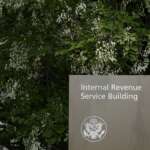An ATM provides convenience 24 hours a day so consumers can withdraw their cash, check their balances, make deposits or transfer money between their checking and savings accounts. Consumers can find ATMs at their bank or inside retailers such as grocery stores, pharmacies and other retailers.
Not all ATMs are equal — stick to ones at a bank or a store to ensure your safety; and ones from your bank’s network to avoid paying additional transaction fees.
[Read: Best Checking Accounts.]
How to Use an ATM
While ATMs allow you to perform several types of transactions, the process for each is usually the same. Here are steps for using an ATM:
1. Scan the area. Look around to make sure the area is safe, whether it’s a walk-up or drive-thru. At night, it should be well-lit.
2. Insert your debit card. Some ATMs require that you swipe and remove your card right away, but with others, you keep it inserted until you’re done with your transactions. Punch in your PIN (don’t let anyone else see it). You could also use a credit card, but it’s best not to use one because of fees for cash advances. At some ATMs, you don’t need to use a card at all.
3. Follow the screen. Pick what you want to do, either on the screen or the keypad. You can do more than one kind of transaction. You’ll need to choose how much you want to withdraw. You may need to input how much you’re depositing, but some ATMs can read your checks. Some ATMs will display your most-used transactions as a shortcut.
4. Confirm your transaction. Pick up your cash and/or your receipt if you want one. You may want either a paper or emailed receipt to show the deposit amount before the checks have cleared.
5. Remove your card. Take your debit card and make sure the screen shows you’re clear (so no one else can access your accounts).
Consumers who get cash should be aware of the ATM’s surroundings. Depositing or withdrawing cash could attract the attention of criminals, so check whether anyone is watching you.
“If you are alone in a low-visibility area when withdrawing money, you attract the wrong sort of attention from criminals who are looking for fresh targets,” says Bruce McClary, senior vice president of communications for the National Foundation for Credit Counseling and a former U.S. News contributor.
Some ATMs are not owned by a bank and are placed inside a retailer, restaurant, mall or casino in highly trafficked areas, but without any security watching the machine.
Tech-savvy criminals can rig an ATM with a skimming device to copy and transmit your card number and PIN, McClary says. Criminals have also used a technique that involves the placement of cameras that capture your card number and PIN while you complete your transaction.
[Read: Best Savings Accounts.]
Where to Find an ATM
You can locate an ATM near you by going to your financial institution’s website. Most banks and credit unions have a section of their website where you can search for the locations of branches and ATMs.
It is easier to find an ATM managed by a national bank such as Citibank since it has more than 65,000 ATMs, including ones located throughout the U.S. in stores such as CVS, Target, Rite Aid and Walgreens. But even smaller banks and credit unions may be part of ATM networks such as Allpoint that spread across the country with more than 55,000 locations.
You may still be able to use ATMs that aren’t part of your institution’s network if ATMs are sparse in your area. However, using a different ATM will likely cost you additional fees.
How to Avoid ATM Fees
To avoid costly transaction fees, use an ATM that is managed by your bank or credit union, McClary says. Otherwise, you can get hit by two sets of fees — from your bank and the owner of the ATM. The fees can run from $2.50 each time to as much as $5 or more, especially if you are using an ATM in another country.
Some banks like Charles Schwab will refund all of your ATM fees. Online-only bank Ally Bank will refund $10 in fees for each statement cycle.
It’s best to avoid ATMs in casinos, stadiums or other entertainment venues. The fees are likely higher and there is a higher temptation to spend cash.
[Read: Best CD Rates.]
Alternatives to Using ATMs
An ATM or bank branch may be more necessary when you want to withdraw larger amounts of cash. However, if you’re looking to check your balance, make a deposit or just take out a little bit of cash there may be other, more convenient options.
Many retailers allow customers to receive a limited amount of cash back when they are making a purchase. This option is even available via self-checkout lanes at national retailers such as Target. Grocery stores and wholesale clubs such as Trader Joe’s, Kroger and Costco also offer this option. You can avoid paying fees and receive cash in a safe environment.
Many banks and credit unions have robust online or mobile banking portals that can be helpful if you can’t access an ATM. Consumers can check their balances and transfer money between their savings account and checking account from the bank’s website or its app. You can also make check deposits from a bank’s app.
“In most cases, (depositing a check is) as easy as following the step-by-step instructions in the app to take a picture of the front and back of the endorsed check and transmit the information to complete the deposit,” McClary says.
More from U.S. News
How to Use an ATM originally appeared on usnews.com
Update 01/06/25: This story was previously published at an earlier date and has been updated with new information.













